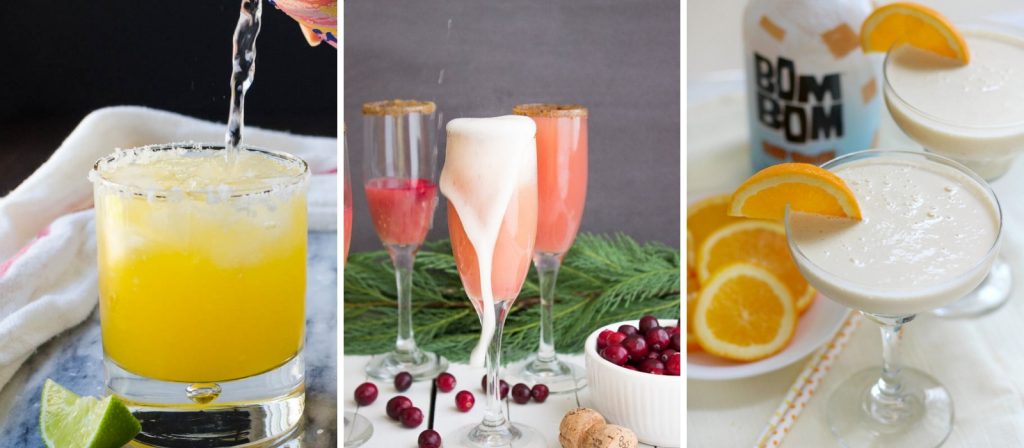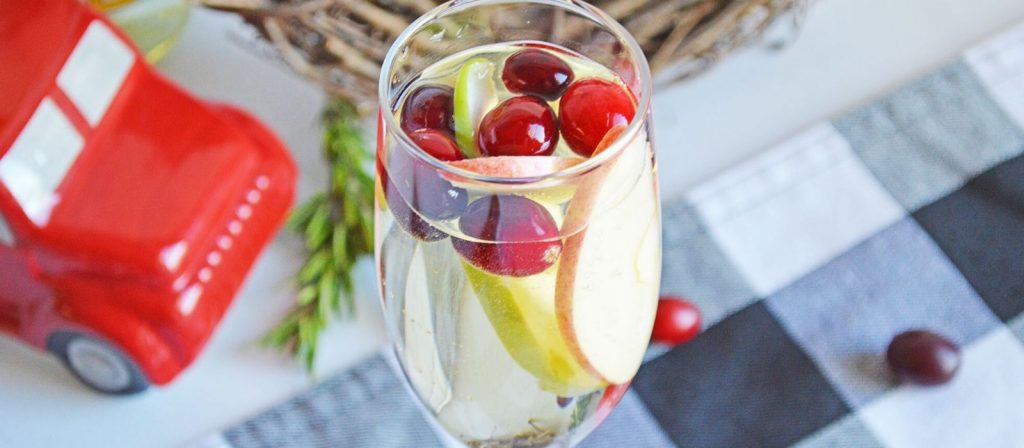Disclosure of Material Connection: Some of the links in the post above are "affiliate links." This means if you click on the link and purchase the item, I will receive an affiliate commission. Regardless, I only recommend products or services I use personally and believe will add value to my readers. I am disclosing this in accordance with the Federal Trade Commission's 16 CFR, Part 255: "Guides Concerning the Use of Endorsements and Testimonials in Advertising."
Right Bank Bordeaux reds are renowned throughout the world. They offer aromas and palate that have become known as quintessentially Bordeaux and there is a good chance that if you’ve already sampled a Bordeaux red wine then it will have come from the “Right Bank”.
A Guide to Bordeaux Reds: Right Bank
But what do we mean when we say “Right Bank”? Bordeaux is fed by a number of rivers, the main of which are the Garonne and the Dourdogne. These two rivers meet at the Gironde estuary which is just north of the city and is the largest estuary in western Europe. Wines made on the right bank of the estuary and the Dourdogne river are classed as Right Bank wines. The area is also known as Libournais, named after the medieval market town that was founded in the area which helped to stimulate winemaking from the 13th century onwards.
Right Bank wines can be very different to their Left Bank cousins. Here, Merlot is king and the blends with which the wines are made can include any combination of Merlot and Cabernet Franc, Cabernet Sauvignon, Malbec, Petit Verdot and Carménère. The wines are medium to full bodied, will consist of black or red fruit notes and be slightly lower in alcohol content. The wines on the Right Bank are a touch softer and more refined too.
As with the Left Bank, Right Bank wines are divided into communes or AOC’s with each having their own distinct winemaking style, soils and microclimate that will affect the taste of the wine. The majority of the wines can age for between 5-30 years but can also be drunk immediately.
There are so many more communes on the right bank than on the left bank and we can’t cover them all so we’ll focus on the more popular (and the ones I’m more familiar with!).
With each commune, I’ll highlight 3 wines that are good examples of the variety and that will suit every budget. I’ll also highlight a riskier food pairing for each style too, though if you pair any reds on the right bank with beef, lamb, poultry or venison then you’re on to a winner!
Right Bank communes are much easier to pronounce than their Left Bank cousins but I’ve given a handy tip on how to say each commune next to their title just in case.
Bordeaux Supérieur (Bor-doh – Soop-er-ee-urr)
Bordeaux AOC is the largest of the Right Bank AOC’S. The area is vast with its northernmost point being just south of Côtes de Bourg. The region envelopes the communes of Fronsac, Pomerol and Saint-Émilion and a separate region under the same name can be found much further south, sandwiched between Sauternes AOC and Entres-Deux-Mers. Given the size of the region, styles can differ massively due to the varying range of soil and microclimate.
In its simplest sense, Bordeaux Supérieur wines will come from Bordeaux AOC but are seen as a better-quality wine and will have a higher alcohol content. The term Bordeaux Supérieur will appear on the bottle and can be some of the finest expressions of the region’s wines. If you find yourself drinking and enjoying Bordeaux Supérieur then it’s a given that you’ll become a fan of Bordeaux reds!
Bordeaux Supérieur wines will be made up of mainly Merlot and Cabernet Franc though you’ll get variations in blends that include Cabernet Sauvignon, Petit Verdot, Malbec and Carménère.
Both red and black fruits can dominate your senses though the best expressions of Bordeaux Supérieur will have aromas of blackberry, blackcurrant and chocolate with good earthy notes. You want many of these characteristics to translate onto the palate with hints of vanilla and tobacco shining through too. As they are often blends dominated by Merlot, the body will be medium and you may even get a touch of spice on that nice, long finish.
Bordeaux Supérieur wines have the capacity to age between 5-10 years but you’ll get outstanding examples of the style that are available to drink immediately. The wines are also really accessible and affordable so it is a very good place to begin if you’re looking to learn about Bordeaux reds in general.
Food Pairing
Why not be very risky and pair your Bordeaux Supérieur with Lasagne alla Bolognese?
Bordeaux Supérieur to Try
Chateau Francs Magnus Bordeaux Superieur 2016 $11-15
Chateau Pas de Rauzan Bordeaux Superieur 2016 $14-18
Chateau Feret Lambert Bordeaux Superieur 2015 $18-22
Côtes de Bourg (Coat -de –Borg)
Côtes de Bourg is the most northerly of the AOC’s covered here and is steeped in history. Grapes were first planted by the Romans from the 1st century AD because the region was perfectly placed to allow access to both the Garonne and Dourdogne rivers. Côtes de Bourg as we know it today was created in 1920 though only 15% of wines from this AOC are currently exported abroad.
The grape varieties planted here are as you’d expect, with Merlot making up 65% of the plantation though you’ll also find Cabernet Franc, Cabernet Sauvignon and Petit Verdot. Malbec makes up 10% of the regions grape production, making Côtes de Bourg the AOC with the highest concentrations of Malbec in Bordeaux.
Both red fruits (strawberry, raspberry, cherry) and black fruits (plum, blackcurrant, blackberry) will dominate the nose and you should expect to get hints of earth, leather, tobacco and chocolate depending on which chateau you’re drinking and the age of the wine. These characteristics should also come through on the palate, with a medium body and a nice long finish rounding off the profile.
Côtes de Bourg lasts for between 5-10 years so purchase these wines with a view to drinking them in the short term.
For Côtes de Bourg, there will be a wine that will suit every budget but the wines are often fairly cheap and accessible.
Food Pairing
Have a go at pairing your Cotes-de-Bourg with a Chorizo Risotto.
Côtes de Bourg to Try
Chateau du Bousquet 2014 $12-14
Chateau La Grolet Cotes-de-Bourg (vintage not stated) $17-20
Chateau Mercier 2009 $22-25
Fronsac and Canon-Fronsac (Fron-sak & Ka-non – Fron-sak)
Fronsac and its smaller sibling, Canon-Fronsac, can also trace their winemaking routes back to the Roman times and remained extremely popular well into the 19th century. They were considered the darlings of the Right Bank Bordeaux reds, and estates in these regions would often sell for higher prices than estates in Saint-Émilion or Pomerol.
Both AOC’s have since been eclipsed by Saint-Émilion and Pomerol in terms of popularity and currently only 24% of the region’s wines are exported. Both AOC’s were virtually wiped out by the Phylloxera epidemic in the late 19th century and whilst Saint-Émilion can attract tourists the world over with its beautiful medieval town, Fronsac and Canon-Fronsac have no such luxury.
That’s not to say that the wines from these AOC’s are poor however. In fact, the soils in these communes are generally the same throughout (clay and limestone) so wines from Fronsac and Canon-Fronsac often show greater consistency than their more popular neighbours.
Merlot will dominate the blend, with Cabernet Franc also being evident in varied quantities. Cabernet Sauvignon will appear too but you are more likely to see this for wines in Canon-Fronsac.
Fronsac is considered the better of the two AOC’s. The wines will likely be ruby in colour and give you aromas of red fruits (red berries, cherry) with hints of pepper. On the palate, the red fruit notes should shine through and that peppery spice will come to the fore after you’ve swallowed. You’ll also find black fruit notes with hints of chocolate, vanilla and tobacco depending on which wine you choose so be sure to do some research on the tasting profile before you make your purchase.
Canon-Fronsac wines are generally seen as lighter and you’ll often get aromas of raspberry, strawberry and cherry that develop into leather and coffee bean with age. Red fruits should shine through on the palate and expect a medium body with a medium to long finish.
Both wines are suitable to drink immediately and will only age for between 3-12 years.
Food Pairing
Who doesn’t love Chicken Tagine? Go on, pair your Fronsac with a Chicken Tagine and be sure to tell me if I’ve gone mad in the comments below!
Fronsac & Canon-Fronsac to Try
Chateau Lague Fronsac 2015 $18-22
Chateau Vrai Canon Bouche Canon-Fronsac 2013 $21-24
Chateau De La Huste Fronsac 2016 $23-26
Pomerol (Pomm-er-rol)
Without question this is my favourite of all of the Bordeaux AOC’s. It sits right next door to Saint-Émilion and shares many characteristics with its next-door neighbour.
Pomerol is one of the smallest AOC’s in Bordeaux with approximately 150 Chateau having 800 hectares of the AOC under vine. It’s so small, in fact, that a moderately fit runner could run an entire lap of the AOC in under 3 hours!
Given its size, it also means that Pomerol wines are some of the most expensive and collectable wines in the world. Prices will typically start at $70 and could fetch as high as $6,000 easily. If you’re a collector then look out for bottles of Château Petrus or Château Le Pin. These beauties will age very well and appreciate in value as they get older!
Pomerol’s importance as a winemaking commune didn’t grow until the 13th century AD. In 1270 the English founded the city of Libourne just north of the commune so there quickly became a market for Pomerol wines and the its importance has steadily grown from there. Bottles of Pomerol will often display the Maltese Cross on their labels and the cross has become synonymous with the region. The cross was also the symbol of the Knights Hospitaler and many returning crusaders settled in the area, building hostels and hospitals around the same time as the founding of Libourne.
Over time, Pomerol has even developed its own wine brotherhood, founded to commemorate one of the hospices built in the region by the order of Saint John of Jerusalem. They still kit themselves out in red robes bearing the Maltese Cross and fly the flag for the AOC throughout the world!
Pomerol wines are rich with black fruit notes dominating the nose and palate. Expect notes of dark cherry, plums and blackberry with concentrated notes of chocolate, earth and leather. The best examples of Pomerol will have hints of spice and soft, silky tannins on its long finish. If you’re able to, then decant the wine for approximately one hour before drinking as it will further soften the tannins and bring out the fruit notes. If you don’t decant it then expect to find a lot of sediment at the end of the bottle!
Pomerol ages well so you can buy an aged bottle to drink immediately or buy a young bottle to take pride of place on your wine rack for a few years. They really look good on any wine rack too.
Pomerol is not cheap and may be prohibitive to the aspiring wine drinker. Do not despair however, as Pomerol also has a sibling, Lalande-de-Pomerol. Lalande-de-Pomerol shares many characteristics with its more prestigious neighbour but the wines are much more affordable so start here if you’re looking for a good expression of the type without the extortionate price tag.
Food Pairing
Try any Pomerol with either a Swordfish Steak or Rainbow Trout for a unique pairing.
Pomerol to Try
Chateau Garraude Lalande de Pomerol 2015 $32-36
Chateau La Pointe Pomerol 2016 $72-78
Chateau Nenin Pomerol 2016 $82-88
Saint-Émilion (sant – Emil-leon)
Saint-Émilion is by far the most popular of the right bank AOC’s and perhaps even the most popular throughout Bordeaux. The commune has been producing wines since Ancient Roman times and ever since it has become a by-word for top quality Bordeaux wine. The quality of Saint-Émilion wine was realised even during the Medieval period. In 1312 king Edward II of England allowed the town to continue to govern itself provided it could provide 50 barrels of wine to the English crown. He seemed keen to acquire the wine as he stipulated that it needed to be delivered by Easter of that year!
Today, the town has become a major tourist attraction which has helped cement its reputation as a top-quality wine producer. Any tourist operator worth their salt will encourage you to visit the town where you can sample the amazing food, absorb the breath-taking views or visit the ample wine shops that appear on the corner of every street. And you should.
I love Saint-Émilion wine. It’s a perennial favorite of mine and has become the standard bearer for Bordeaux wine throughout the world.
As with all Right Bank reds, Merlot is king here and Cabernet Franc will often be added to the blend though expect to find some Cabernet Sauvignon, Malbec and Petit Verdot in a number of blends.
The nose is going to be full of earth and leather with good notes of blackcurrant and plum. Wines with a higher concentration of Cabernet Franc may even display floral notes on the nose too. On the palate, the fruit notes really come to the fore and you may also get notes of chocolate, vanilla and tobacco as the wine ages. The finish is often long with a delicate spice, it will be full bodied and have medium acidity.
Lighter wines that are more red fruit-forward are also commonplace in Saint-Émilion so be sure to do a little bit of research if you’re looking for a particular wine to suit your palate.
Saint-Émilion wines often age very well, with the best examples ageing up to 30 years though they are able to be drunk immediately. When shopping for Saint-Émilion, you’ll notice that many will already be 4-8 years old so there’s a good chance you’ll be drinking an aged wine with further potential. The price of the wines can differ greatly though expect to pay through the roof for the more well-known “Grand Cru” chateaus. However, if you come across Montagne Saint-Émilion or Lussac Saint-Émilion then these will often be a cheaper alternative that produce outstanding examples of the style.
Food Pairing
Fetch your Camembert from the fridge, go and get yourself some of your favourite bread and break out the Saint-Émilion for a truly memorable pairing experience!
Saint-Émilion to Try
Chateau La Papeterie Montagne Saint Emilion 2015 $25-30
Chateau Bel-Air Lussac Saint Emilion (vintage not stated) $25-30
Chateau Palatin St Emilion Grand Cru (vintage not stated) $34-38
Clos Labarde St Emilion Grand Cru 2015 $43-46
Chateau Canon La Gaffeliere St Emilion 2016 $120-140
So, there you have it, the most popular communes on the right bank of the Gironde estuary (and ones that I’m familiar with!). There are a lot of wines to choose from between these communes and all will have their own unique style and flavors. There are plenty more communes on the right bank to discover however, so be sure to branch out and discover more of what Bordeaux wines have to offer once you’ve gotten to grips with the communes I’ve highlighted. As always, tell us about some of the best Bordeaux wines you’ve tasted by leaving a comment below and be sure to drink your Right Bank reds responsibly.







